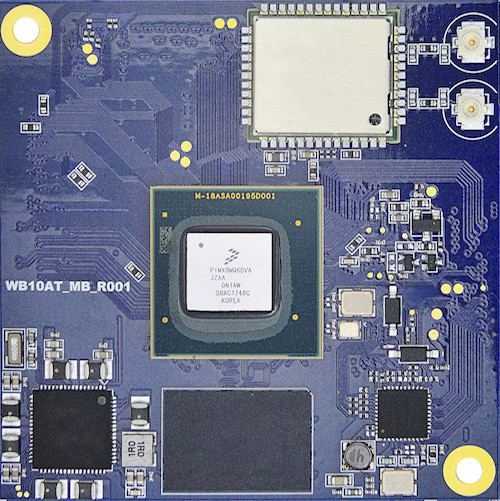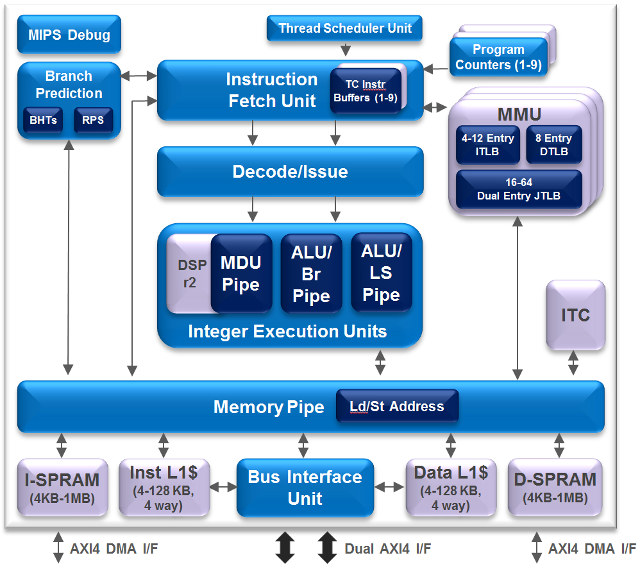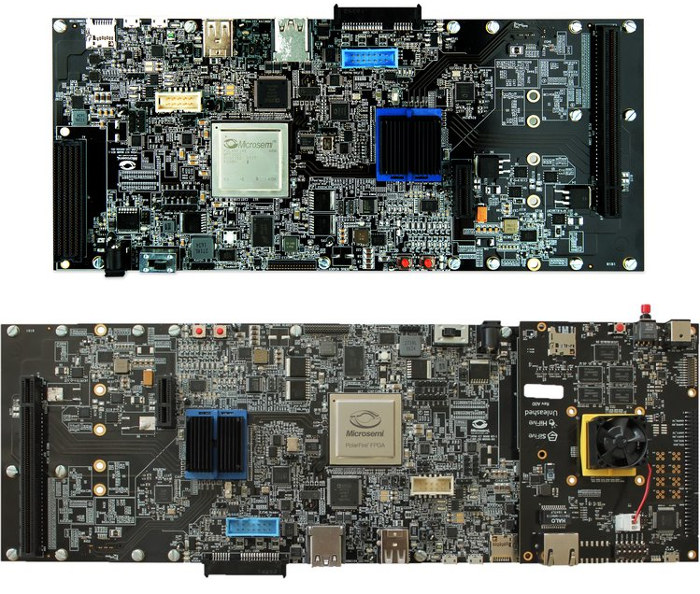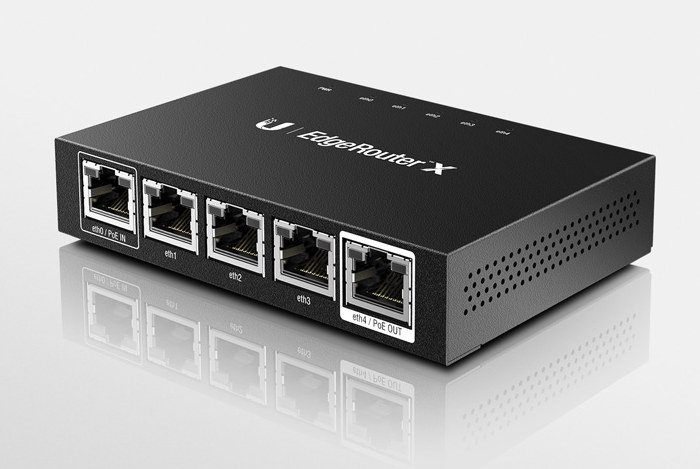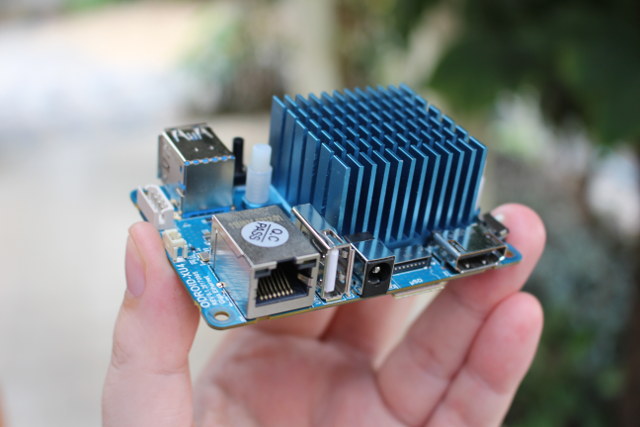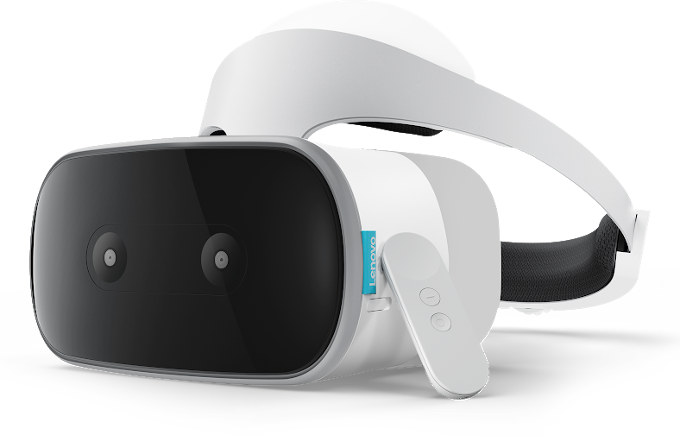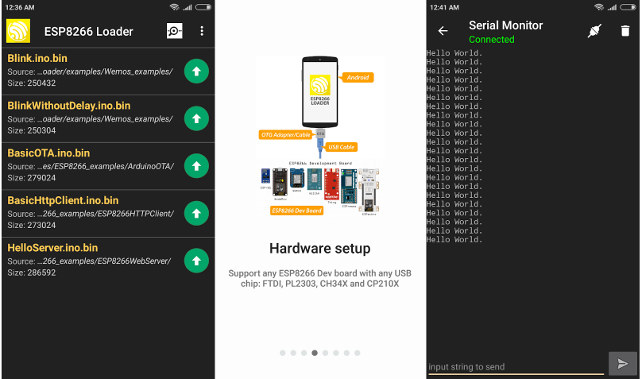Brillo Project was renamed to Android Things with the release of a developer preview back in December 2014, and the operating system enabling developers and companies to build and maintain Internet of Things devices at scale. The OS has now graduated so-to-speak with the release of Android Things 1.0 with long-term support for production devices, and this was to be expected as several Android Things devices were announced earlier this year. The new release adds supports for new system-on-modules (SoMs) based on the NXP i.MX8M, Qualcomm SDA212, Qualcomm SDA624, and MediaTek MT8516 SoCs. These modules are certified for production use with guaranteed long-term support for 3 years, and development hardware and reference designs for these SoMs will be available in the coming months. The Raspberry Pi 3 Model B and NXP i.MX7D boards and system-on-modules are still supported, but support for NXP i.MX6UL devices will be deprecated. Check out the […]
MIPS I7200 Processor Core with nanoMIPS Architecture is Designed for LTE/5G Communications & Networking SoCs
MIPS has recently unveiled the I7200 multi-threaded multi-core processor for advanced LTE/5G communications and networking SoCs, which also happens to be the first MIPS core based on the new nanoMIPS 32-bit ISA. nanoMIPS is a variable instruction length ISA consisting of 16/32/48-bit instructions and various other optimizations that enables performance in the smallest code size. MIPS I7200 core features: 32-bit nanoMIPS Instruction Set Architecture with MIPS DSP ASE optimized instruction set extensions for integer DSP and 32-bit SIMD operations Balanced, 9-stage, dual-issue pipeline with Vertical Multi-Threading (VMT) Superscalar on a single thread per cycle Zero overhead context switching – can switch threads every clock cycle Implements MIPS MT ASE – can implement up to 3 fully OS visible Virtual Processor Elements (VPEs) per core, and up to 9 lightweight thread contexts (TCs) per core, assignable to the VPEs Configurable memory subsystem Support for caches, tightly coupled ScratchPad RAM (SPRAM), or […]
HiFive Unleashed RISC-V Linux Development Board Gets a $2000 FPGA Expansion Board
If you’re a RISC-V architecture’s enthusiast or represent a company working on products with the new ISA, you may have spent $999 or more on Hifive Unleashed RISC-V Linux development board a few months ago. You now have the opportunity to spend an extra $1,999 for HiFive Unleashed Expansion Board powered by a MicroSemi PolarFire FPGA programmed with a PCIe root port bridge, and allowing you to test all sorts of peripherals such as HDD’s & SSD’s, HDMI output, and audio cards, network adapters, graphics cards, and so on. Expansion board specifications: FPGA – Microsemi Low Power PolarFire FPGA with 300K Logic Element 4 Gbit DDR4 x16 SPI Flash for remote FPGA updates, QSPI Flash connected to GPIO 24 lane PCIe Switch x1 PCI Express card connector x16 PCI Express card connector with 4 lanes of PCIe gen2 connected SSD M.2 connector SATA connector HDMI connector eMMC Nand Flash uSD […]
Ubiquiti EdgeRouter X is a $60 Gigabit Ethernet PoE Router Supported by OpenWrt
Stanislav needed a Gigabit Ethernet router to run OpenVPN, and after some research he settled on Ubiquiti EdgeRouter X router with 5 Gigabit Ethernet ports, PoE in and pass-through, with a decent 256 MB RAM and 256MB flash, and a $49 MSRP, although I’ve only seen it for $60 and up. The router is not a new product, as it has been out for a few years (since 2015), and it’s also officially supported by OpenWrt, which makes it even more interesting. Ubiquiti EdgeRouter X (ER-X model) specifications: Processor – Mediatek MT7621AT dual core MIPS1004Kc processor @ 880 MHz System Memory – 256MB RAM Storage – 256 MB NAND flash for firmware 5x Gigabit RJ45 ports Ports configurable for line-rate, Layer-2 switching 260 kpps for 64-byte packets 1 Gbps for 1518-byte packets Passive PoE passthrough option Power – 24V via passive PoE or power adapter There’s also a ER-X-SFP model […]
Review of Ubuntu 18.04 on ODROID-XU4Q Development Board
Hardkernel released their first Samsung Exynos 5422 octa-core board in July 2014 with ODROID-XU3, which at the time was really a powerful board, but also pricey at $179. Later that year, the company released a cheaper version ($99) called ODROID-XU3 Lite, which I had the chance to review with Ubuntu 14.04 and Android 4.4. The company’s adventure with Exynos 5422 processor did not stop there, as in 2015 they released the smaller and even cheaper ($74) ODROID-XU4 board, and last year launched a fanless version of the board with ODROID-XU4Q featuring a large heatsink. More recently, the company also introduced ODROID-HC1 and ODROID-MC1 solutions for respectively network storage and clusters applications. That’s the short history of Hardkernel Exynos 5422 boards as I remember it, and that means that since 2014, or nearly 4 years so far, the company has kept updating Ubuntu and Android firmware for their board, including the […]
Allwinner Unveils A40i/A40pro and A60i/A60pro Industrial & Military Grade Processors
Allwinner A20 dual core Cortex A7 processor was/is one of the most popular Allwinner SoCs thanks to its low cost, the availability of interfaces such as SATA, Gigabit Ethernet, HDMI 1.4, and multimedia support with H.264 encoding and decoding. The company has now introduced new processors that build upon A20, but working in industrial and military temperature ranges, and compliant with various standards (TBD). Allwinner A40i & A40pro The first two models are quad core Cortex A7 processors with A40i being the industrial version, and A40pro the military grade one. Both share most of the same specifications: CPU – 4x Arm Cortex A7 @ 1.2 GHz GPU – Mali-400 MP2 Memory I/F – DDR2/DDR3/LPDDR2/LPDDR3 up to 3GB RAM Storage I/F – 32-bit NAND, eMMC, SD card, SPI NOR flash, SPI NAND flash, 1x SATA Video Engine Decoder – Multi-format decoder up to 1080p60 Encoder – H.264 encoder up to 1080p45 […]
Lenovo Introduces Mirage Solo Daydream Standalone Virtual Reality Headset & Mirage Camera for VR180 Video Recording
Standalone / All-in-One Android virtual reality headsets have been around for a couple of years, mostly from Chinese vendors. But the number and quality of VR apps available were rather low at the time, and those VR headsets were mostly useful to watch 360° & VR videos. This may explain why larger companies had not launched any standalone headset so far, but this week everything changed, as Facebook started selling their Oculus Go virtual reality headset , and Google & Lenovo have just jointly announced the availability of Mirage Solo, the first standalone VR headset compatible with Google Daydream. Lenovo Mirage Solo specifications: SoC- Qualcomm Snapdragon 835 VR processor System Memory – 4 GB RAM Storage – 64 GB UFS flash, microSD Card slot up to 256 GB Display – 5.5″ QHD (2560 x 1440) LCD display @ 75 Hz Lenses – 2 x Fresnel-Aspheric 110° FOV Camera – Dual […]
ESP8266 Loader App Allows you to Flash and Debug ESP8266 Boards from Android Smartphones
In case you’d like to flash ESP8266 boards using a phone, you can now do so with ESP8266 Loader app for Android, which also gives you access to the serial console. All you’ll need to an Android smartphone with USB OTG support, a good USB cable, and a few ESP8266 boards such as Wemos D1 mini or NodeMCU. It should also be possible to use a TV box instead. Other listed features: Support any USB chip – CDC/ACM, FTDI, PL2303, CH34X and CP210X Change the SSID & password automatically durring upload No Ads (Pro version) Access to Google Drive storage (Pro version) Multiple upload widgets button (Pro version) That’s a free app with premium features, which also means it’s not open source, so any new features would have to be implemented by the developer. I asked him whether ESP32 boards were also supported, but he answered the app only works […]

